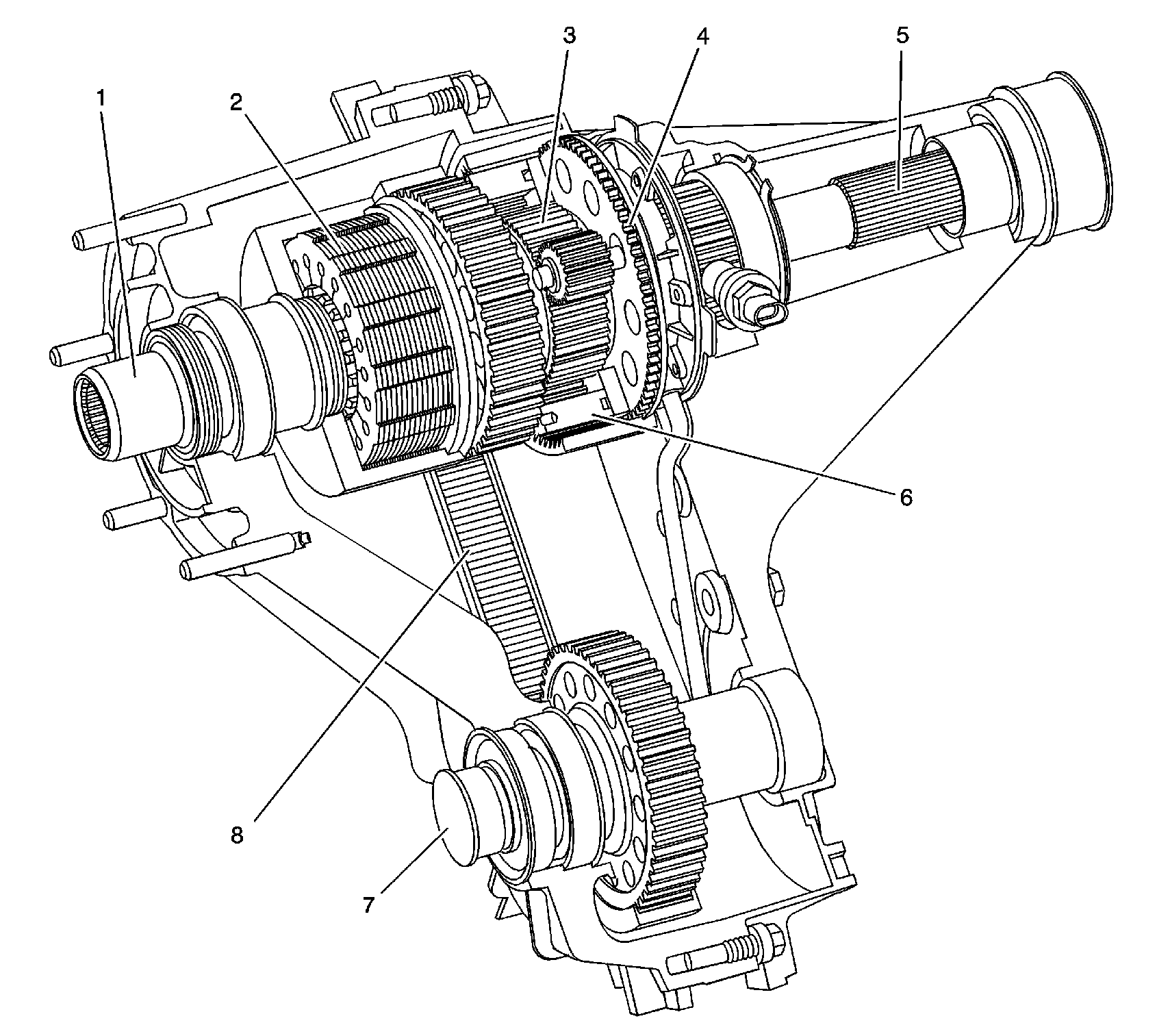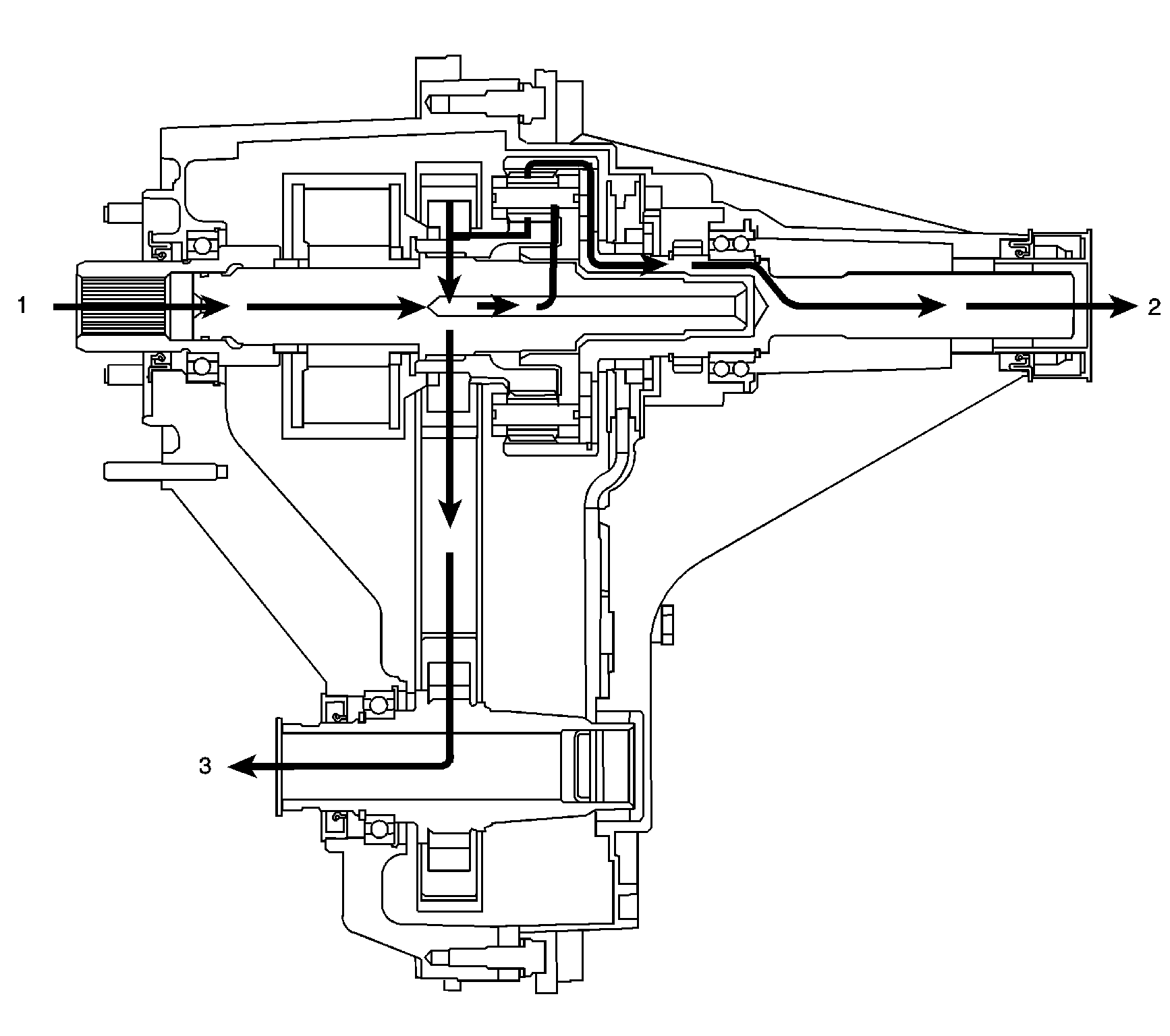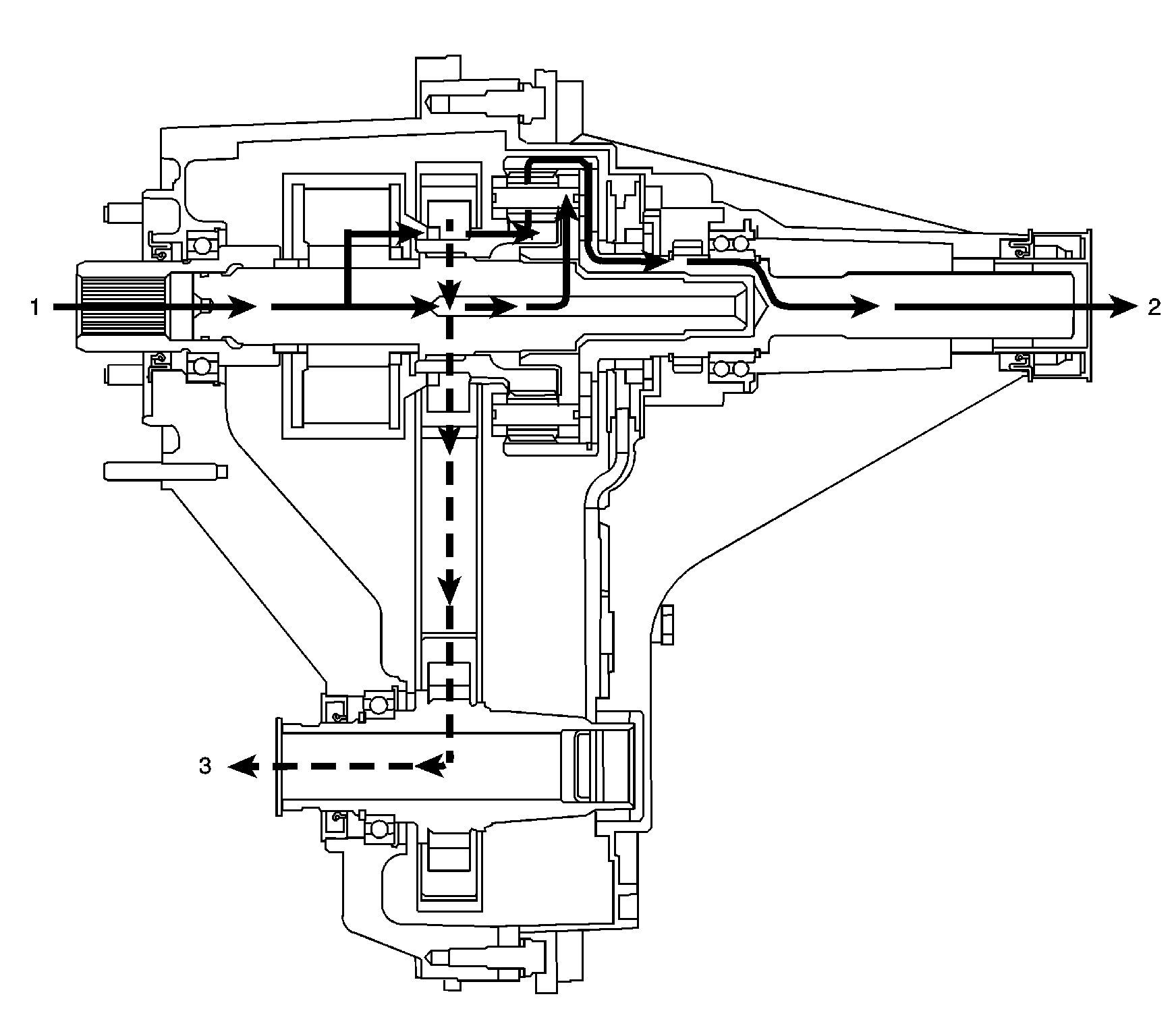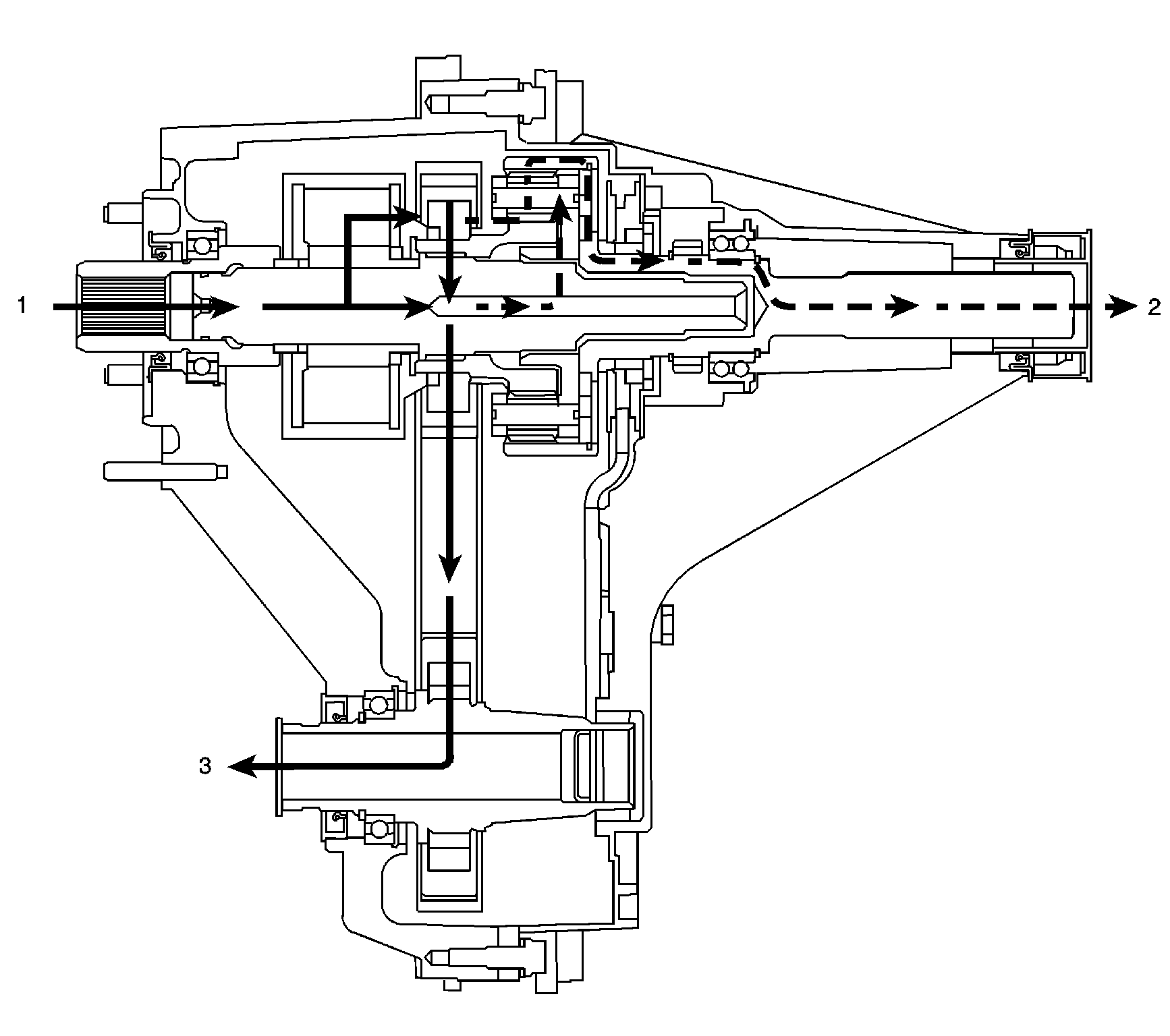
The NVG 149 RPO NP3 is a single speed, single mode transfer case. The mode is full-time all wheel drive. It has a planetary differential gear set that splits the torque, normally 38 percent to the front wheels and 62 percent to the rear wheels.
The NVG 149 utilizes magnesium housings. Proper fasteners, brackets, and fill/drain plugs must be used to prevent galvanic corrosion. The planetary differential uses the carrier (6) as the input. The annulus gear (4) connects to the rear output shaft (5) and rear wheels. The sun gear (3) connects to the front output shaft (7) and front wheels through the chain (8) and sprockets. The viscous coupling (2) consists of a sealed housing filled with a high viscosity silicone fluid and thin steel plates alternately splined to the inner and outer drum. The inner drum is connected to the input shaft (1), and the outer drum to the sun gear (3). Whenever there is a speed difference between the front and rear wheels, the inner and outer plates of the viscous coupling spin relative to each other and the silicone fluid provides resistance. The resistance was tuned to be high enough to bias power quickly to the wheels with traction, and low enough to prevent binding in a tight turn on dry surfaces. This is the most common way the viscous coupling is activated, the shear mode. If the speed difference is high, the coupling can lock or hump. This "hump" occurs when the heat generated, expands the fluid inside the housing, changing the fluid dynamics between the plates. This results in pressure between the plates, forcing them into contact with each other, similar to a clutch pack. In the hump mode, the coupling can bias torque 100 percent to one axle, if required. Situations requiring this are extreme such as backing up a steep gravel grade or climbing over off-road obstacles. The viscous coupling is not serviceable; it must be replaced if defective. This is because each viscous coupling is calibrated for optimum vehicle performance for both the shear and hump modes. If the viscous coupling is in the "hump" mode too long, severe damage will occur.
To prevent damage to the viscous coupling, DO NOT:
| • | Tow with only two wheels down |
| • | Drive without one propshaft |
| • | Drive with a "donut" spare tire for an extended period of time |
| • | Operate the vehicle on a hoist to diagnose the driveline components |
Power Flow - No Wheels Slip

During normal operation, 100 percent torque is delivered to the input shaft (1) from the transmission. The torque is split to 62 percent to the rear output shaft (2) and 38 percent to the front output shaft (3), by the planetary differential. Because there is not a loss in traction or slip in the front or rear wheels, the viscous coupling is locked in place and there is no "shear" mode or "hump" mode involved.
Power Flow - Front Wheels Slip

When traction is lost at the front wheels, the viscous coupling works in conjunction with the differential to bias the torque more to the rear wheels. The rear torque goes higher than the 62 percent, and up to 100 percent torque to the rear output shaft (2). The torque at the front output shaft (3) is lowered from the 38 percent, to as low as 0 percent torque.
Power Flow - Rear Wheels Slip

When traction is lost at the rear wheels, the torque is biased to the front wheels. The torque to the front output shaft (3) goes higher from the 38 percent, up to 100 percent torque. The torque at the rear output shaft (2) is lowered from the 62 percent, to as low as 0 percent torque.
Customers may have concern that the transfer case is not operating properly because one set of tires spun for a brief period. It is normal for one set of tires to spin until the viscous coupling engages.
Turning off the traction control switch, if equipped, enhances the function of the viscous coupling. The viscous coupling, as described above, engages by heat. Allowing one set of tires to spin or slip for a brief period will generate heat in the viscous coupling. The engine speed should be kept at a constant speed during the brief spin of the tires. Pulsating the engine speed or hard acceleration will not allow the viscous coupling to operate properly.
